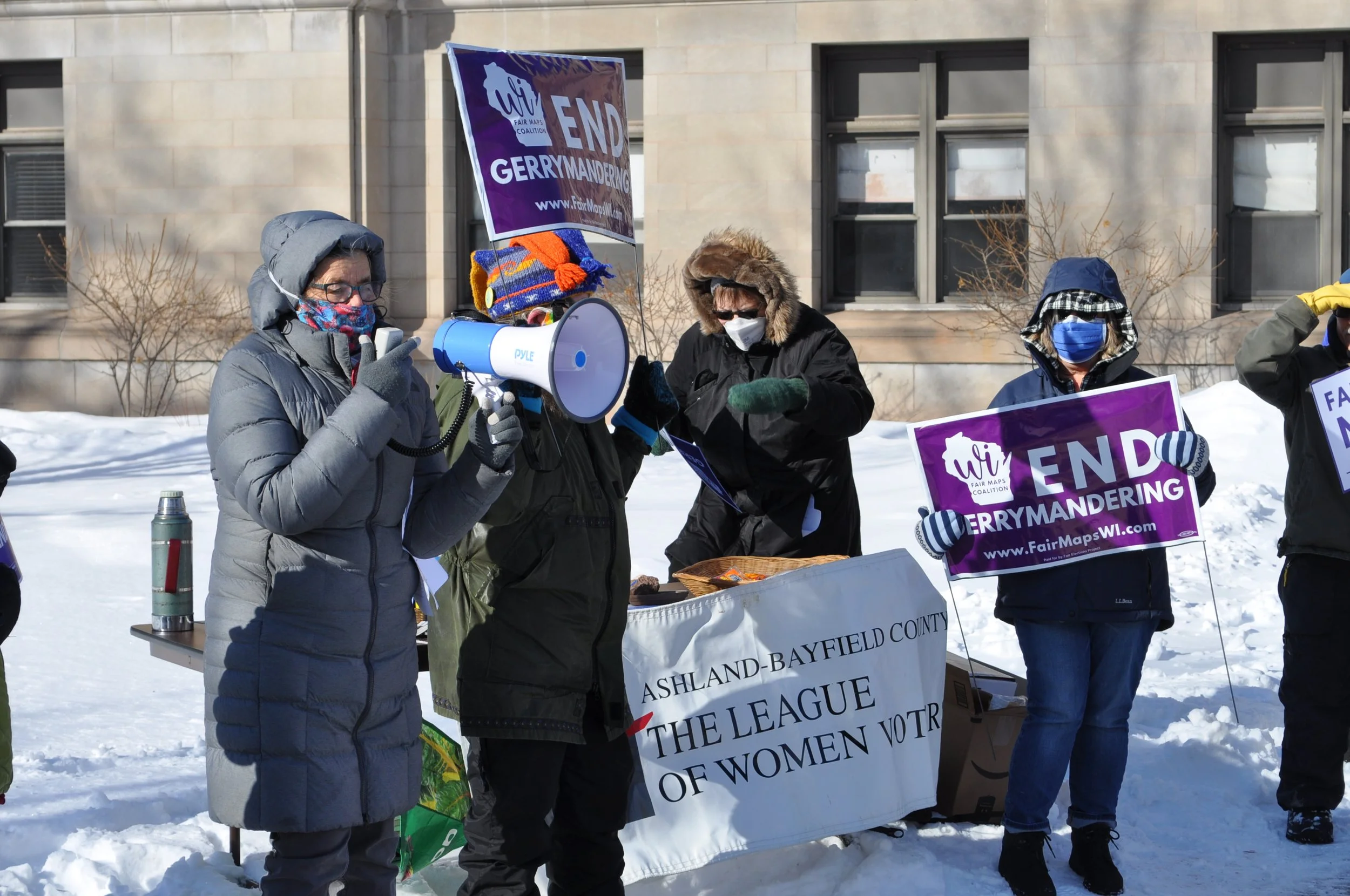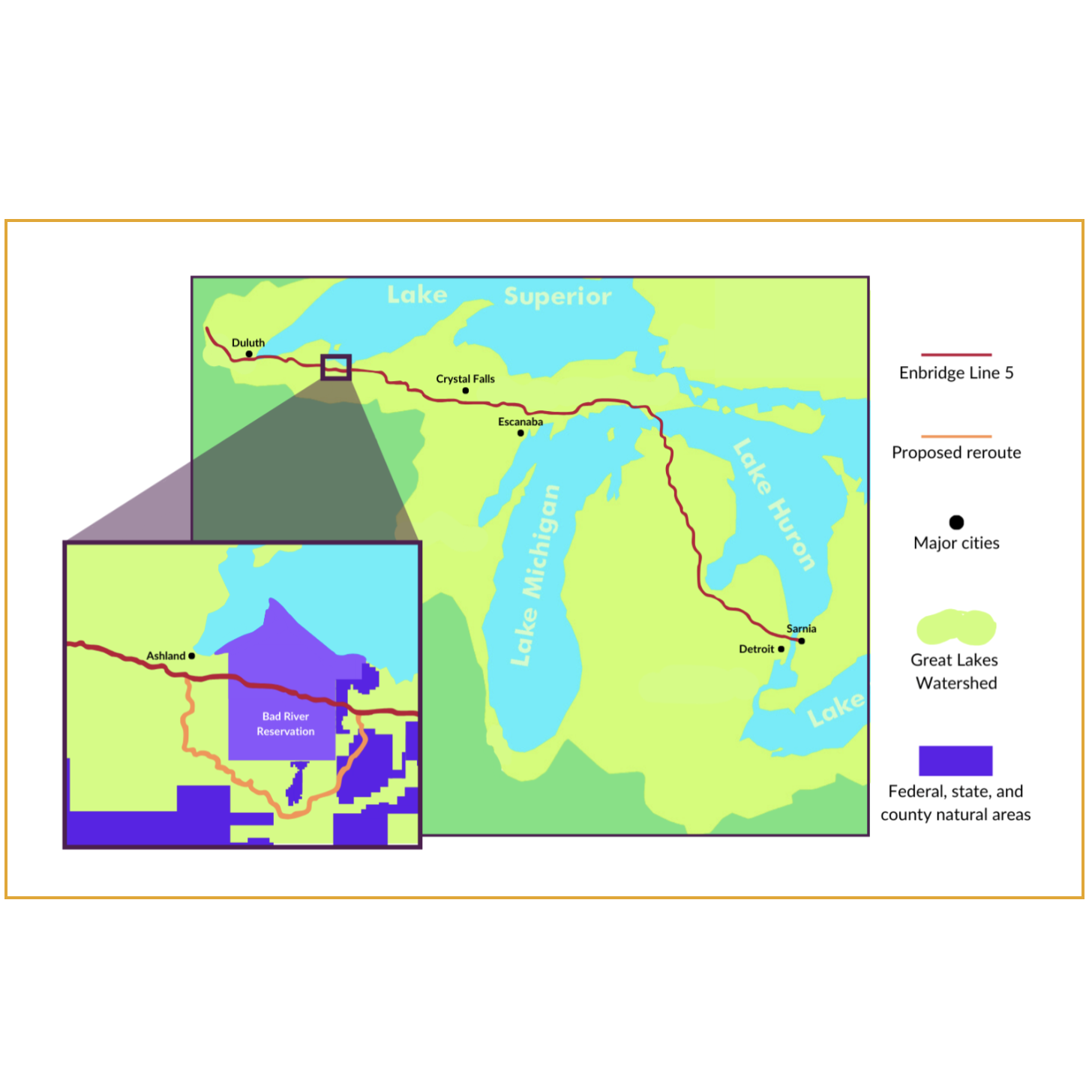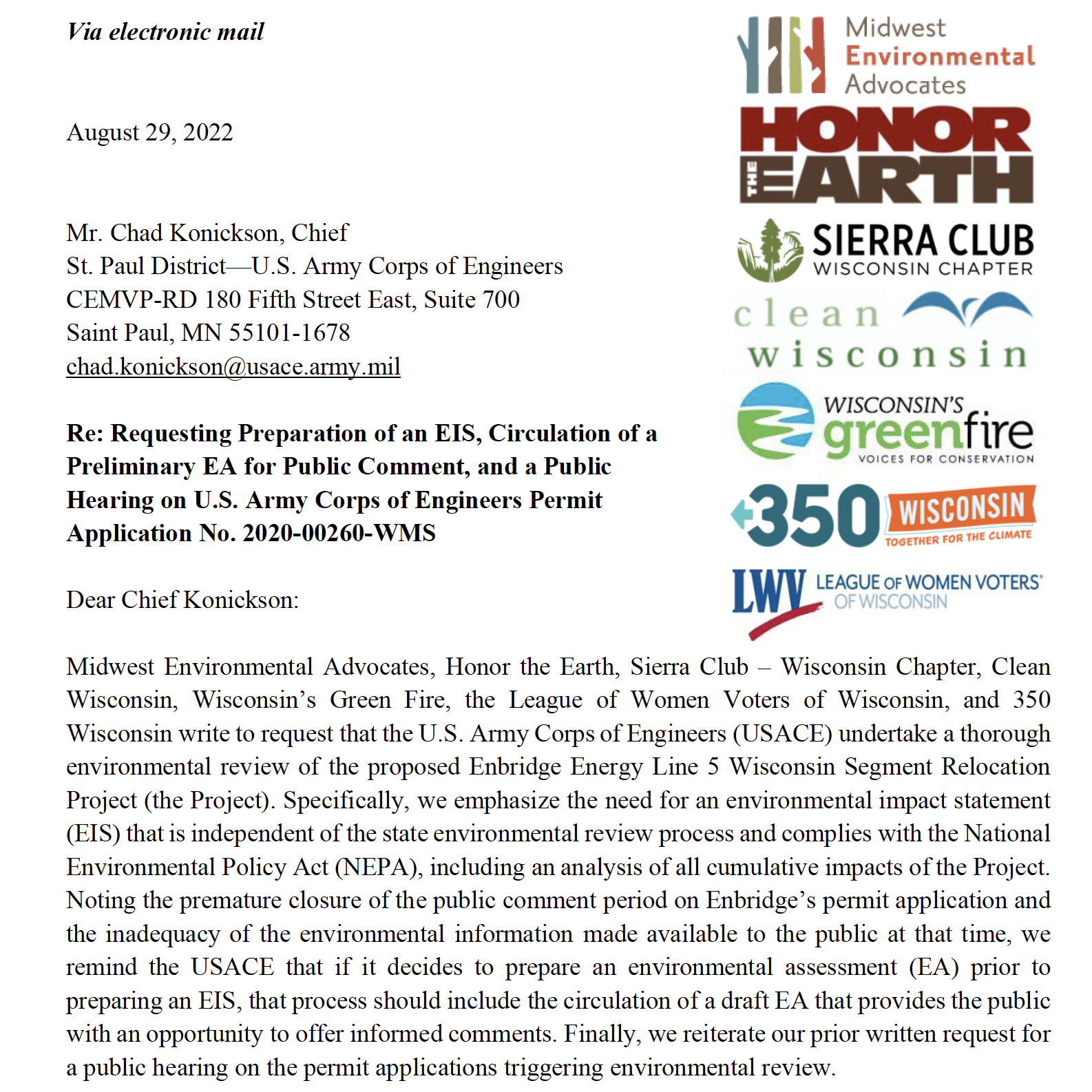LWV/ABC's Letter to DNR re: Request for Input on Enbridge Sandpiper Pipeline Project
/At an August meeting, the Wisconsin Department of Natural Resources requested public input to help determine the scope of an environmental impact statement for the Enbridge Sandpiper Pipeline construction and replacement project in northwestern Douglas County.
The following letter was sent by our president, with the approval of our board, in response to that request.
Please add your input regarding this project to ours!
See our related Action Item for information about submitting input to the DNR.
ASHLAND-BAYFIELD COUNTIES
LEAGUE OF WOMEN VOTERS
September 3, 2014
Jeff Schimpff
Wisconsin Department of Natural Resources
Box 7921
Madison, WI 53707-7921
DNROEEAAComments@wisconsin.gov
RE: Enbridge Pipeline EIS
Dear Mr. Schimpff:
We are writing to urge DNR to conduct a broad and thorough assessment of the environmental impacts associated with Enbridge Energy’s Douglas County Sandpiper Pipeline proposal. The potential impacts of this project would include oil leaks and spills into waters in the Lake Superior basin, and as precious as Lake Superior is, any proposals which put it at risk should be subjected to intense scrutiny. Furthermore, this proposed pipeline would facilitate increased production and consumption of shale oil, particularly troublesome from a climate change perspective. Those impacts should feature prominently in the environmental analysis of the Enbridge proposal.
As you have indicated, the proposal would involve extending the pipeline from the Bakken Shale region in North Dakota. That crude is an especially hazardous material, in that its corrosivity will increase the likelihood of spills and leaks. The Kalamazoo River disaster in Michigan in 2010, as well as incidents closer to home—the pipeline ruptures in Clark and Rusk County in 2007 and in Grand Marsh last summer, are examples of the dangers this pipeline expansion would pose. Given Enbridge’s role in the largest inland oil spill in our nation’s history and over 800 oil spills in the past 15 years, the prospect of allowing it to increase its crude shipments in the Lake Superior basin is troubling, indeed.
As disturbing are the climate change impacts of the pipeline. We understand that this line would be a “key enabler” for tar sands crude expansion projects, and tar sands oil is far “dirtier” than other oil with respect to carbon emissions. In part because the extraction process is extremely carbon intensive and destroys vast areas of Canadian boreal forest, one of the globe’s largest carbon sequestration sites, greenhouse gas emissions associated with tar sands oil are approximately 17 % greater than other oil. Any project which will facilitate increased production, transportation, and/or consumption of tar sands oil should be the subject of a detailed environmental impact statement which examines all of the potential adverse consequences, including the risk of catastrophic Lake Superior oil spills, the destruction of pristine boreal forests, and increased carbon emissions.
We are inclined to agree with the Milwaukee Journal Sentinel editorial writer who observed that “Earth’s finest collection of fresh water—Lake Superior and the Upper Great Lakes—is not a reasonable location for a major transportation corridor designed to carry tar sands crude oil to the overseas market.” We were encouraged to learn that it is the Department’s intent to look at not only “direct local effects,” but also at the “broader impacts at regional, statewide and larger scales.” We urge you to conduct the fullest possible environmental assessment of this project.
Sincerely,
Madelaine Herder
President
League of Women Voters of Ashland and Bayfield Counties



















































































